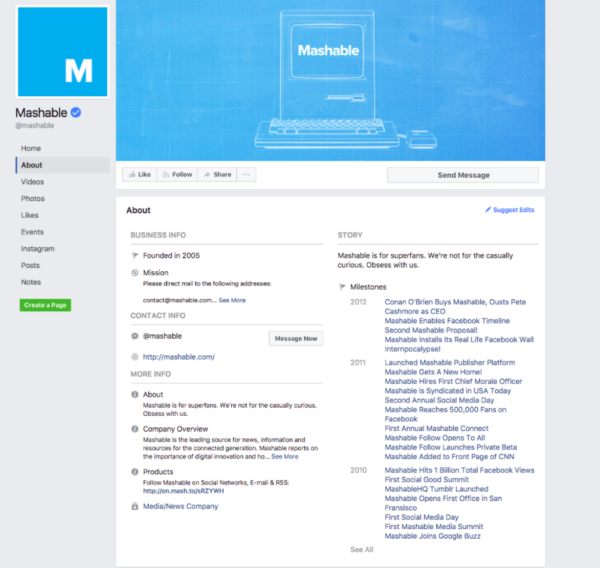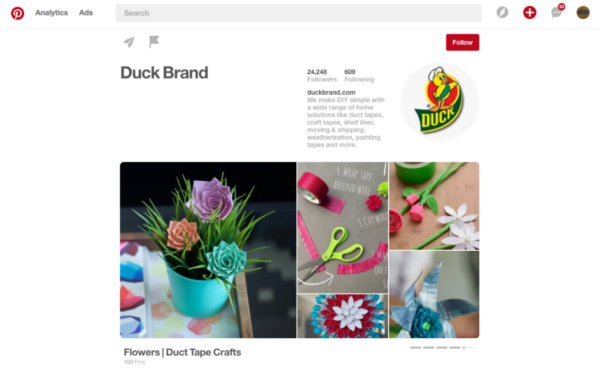Introduction
It’s tempting to skip introductions, but if you hang in there we promise this one will be worth your time. There are seven sections to this Social Media Best Practices Guide. Each section covers practices designed to enhance your execution on social and improve the relationship between your brand and audience. Some information might seem simple (setting goals, for example), but it is absolutely crucial to the success of your social media strategy. Review each section thoroughly, even if you’re already familiar with the concepts, because repetition and attention to detail will help you implement more effective, polished social media best practices.
The sections in this guide are designed to provide you with actionable steps you can start taking today to improve your social media process. This guide is modified on a regular basis to reflect the most accurate social media data, so don’t worry about missing out on critical updates.
Index:
1. Set Measurable Goals
2. Choose the Right Social Platform
3. Complete Account Information
4. Brand Each Account
5. Engage Your Audience
6. Post Consistent, High-Quality Content
7. Add Value & Be Relevant
1. Set Measurable Goals
Start by deciding what you want to accomplish on social media and let those results guide the formation of each goal. Setting goals will allow your organization to measure outcomes and track the progress of your social media best practices.
Common social media goals:
- Drive website traffic
- Build brand awareness
- Increase engagement
- Improve customer service
- Drive leads and sales
Setting your social media goals:
Using the SMART goal-setting method will allow you to establish goals that are specific, measurable, attainable, relevant, and timely. This is possibly one of the most well-circulated social media best practices, but one we believe remains as relevant today as it ever was.
First determine who your audience is, what their interests are, whether your business can fulfill their interests, and why they would want to do business with your brand.
Second, choose a specific goal metric that can be measured, such as a percentage increase of sales, revenue, or engagement.
Third, choose a number that is realistic. Ask yourself if the organization has the resources to reach the chosen number, and if not, what it would take to get there. It’s better to scale back and create accurate projections than to choose exaggerated metrics you can’t reach.
Fourth, make sure your chosen objective makes sense for your business and supports both the brand vision and core values.
Finally, create a timeline that can realistically be achieved. If necessary, break up large chunks of your goal into smaller monthly, weekly, and daily tasks.
2. Choose the Right Social Platform
When you choose which social platforms your brand will be active on, your decision should be based on the value and relevancy of each platform to your business. This social media best practice highlights the importance of deciding on a set of criteria that can guide your social process.
When you choose which social platforms your brand will be active on, your decision should be based on the value and relevancy of each platform to your business. Share on XSocial Media Platform Considerations:
- Social media platform size
- Where your audience is
- Advertising options
- Types of content that perform well
Choose at least two of the above criteria when picking a social platform and speculate how those criteria can help the brand achieve pre-set social media goals. Use the platform-by-platform breakdown below to help simplify your decision and checkout our in-depth blog post on choosing the best social media platform. As social media best practices go, choosing a relevant platform is one of the most important decisions you can make for your brand.
Facebook:
With 1.86 billion active monthly users, Facebook is the largest and most popular social media platform. If you don’t mind a ton of competition, Facebook is the place to be. It also boasts an exceptional advertising platform.
Good for:
- B2C & B2B
- Local Businesses
- Complex Ad Targeting
Twitter:
At 319 million active monthly users, Twitter is almost six times smaller than Facebook but still carries a massive amount of influence. Tech-savvy, younger audiences flock to Twitter. If you’re looking for ways to capitalize on timely information sharing, Twitter is a great platform.
Good for:
- Targeting Younger Demographics
- Timely and Newsworthy Content
- Global Brands
Instagram:
Instagram is growing year-over-year at an accelerated pace, now reaching 600 million active monthly users. With an audience that tends to skew slightly younger, Instagram is all about photos, graphics, and videos. If your brand has access to large amounts of custom visual content, Instagram is a great platform.
Good for:
- Product Marketing
- Building a Loyal Following
- Creating a Brand Experience
Pinterest:
With approximately 110 million active monthly users, Pinterest may sound small, but they have a fiercely loyal following. The audience is strongly skewed towards females, favors large pieces of visual content, and is great for product marketing.
Good for:
- Targeting Female Demographics
- eCommerce Websites
- Visual Content
Google+:
300 million active monthly users isn’t bad, but Google+ users tend to join for SEO purposes and not for social ones. If your brand produces web content, such as blogs, ebooks, and webinars, Google+ provides an opportunity to improve SEO ranking.
Good for:
- Local Businesses
- Improving Search Ranking
- Integrating with Other Google Apps and Websites
YouTube:
With more than 1 billion users, YouTube is the only social platform that gives Facebook a run for it’s money size-wise and is the second largest search engine on the internet. Businesses that produce a lot of original video content can benefit from managing a YouTube account.
Good for:
- Serving Niche Markets
- Videos, Webinars, & Tutorials
- Mobile Users
LinkedIn:
Just 25% of LinkedIn’s 450 million users are active each month. A true B2B social media platform, your brand would be wise to include a strategy for LinkedIn if you operate as a B2B organization.
Good for:
- B2B Companies
- Personal Branding
- Talent Acquisition
3. Complete All Account Information
Including this on a list of social media best practices sounds a little too obvious at first, but it’s also too important to ignore, so here goes. When prospects, leads, and customers visit your brand’s social media profiles, they should be able to read your bio or visit the About page and find a summary of who the business is, what it does, how it can help them, and where they can find more information. This is also the perfect opportunity to provide a link to your website and include relevant hashtags.
A complete, detailed social media account makes a great first impression and also improves your search-ability. Share on XThings to Include in your brand “About” section:
- A link to the business’ website
- Contact information
- Location(s)
- Brief history
- Hashtags, when relevant
Each social platform is a little bit different in the information it allows you to provide:
Facebook:
Facebook’s about section is probably the most detailed of all social media platforms. Businesses can include contact information, including email, phone number, and website address. Business details can be selected that acknowledge features such as parking, valet services, and more. Brands can also write a brief history of their company in the “story” section. The more thorough and accurate your Facebook “About” section is, the easier it will be for people to find you through Facebook’s search.

Twitter:
Twitter has very limited space to complete your brand’s bio, so it’s important to be as succinct and compelling as possible. Twitter offers the ability to add hashtags to your brand’s bio which can make it much easier to be found in search results. It’s best to limit your use of bio hashtags to no more than two and preferably just one.

Instagram:
Like Twitter, the Instagram bio provides very limited space to capture your brand essence. You can include hashtags, emojis, and a link to your website. If you can find a way to use a relevant emoji in your business bio that’s a great way to stand out—just make sure it’s on-brand.

Pinterest:
Much like Twitter and Instagram, Pinterest’s bio has a very low character count. Include information about your brand and business location, and provide a link to your website.

Google+:
Google+ allows brands to add a little more meat to their profiles, including meta descriptions, location, and a lengthy description. Take full advantage of the space to rank for SEO.

LinkedIn:
Number of employees, company industry, location, specialities, website link, and brand description are all part of the standard LinkedIn “About” section.

4. Brand Each Account
Visitors should be able to find your logo and company name as soon as they reach your account. Everything from your visuals to your messaging should convey your brand’s tone and values. Branding is one of the social media best practices rooted in the concept of improving the customer experience.
Ways to Brand Your Social Media Accounts:
- Make your logo and company name prominent
- Watermark original visual content
- Share original content, such as blog posts, articles, and resources
- Post behind-the-scenes company culture images and videos
- Create a social media standard operating procedure (SOP) that allows employees to post autonomously with a deep understanding of brand messaging
Taco Bell does an exceptional job branding their social media accounts.

5. Engage Your Audience
A highly-targeted audience is one that has the potential to drive engagement and ultimately generate sales leads. Engaging with your audience provides a number of benefits to your brand.
A highly-targeted audience is one that has the potential to drive engagement and ultimately generate sales leads. Share on XBenefits of Engaging with Your Audience:
- Enhance the customer service experience
- Build a loyal following of prospects, leads, and customers
- Demonstrate brand expertise
- Provide value to your audience through informative interactions
- Control the brand perception and counter negative feedback
6. Post Consistent, High-Quality Content
Your audience pays attention to the little details and so should you. Share content on a regular basis that speaks to your brand values. Images, videos, post copy, and all other types of content should be optimized for reach and quality.
Your audience pays attention to the little details and so should you. Share on XThings to Check For:
- Image quality – don’t post images that are blurry, pixelated, low-quality, or contain off-brand messaging
- Video quality – all videos should be in high-resolution and present information that your audience will appreciate and enjoy
- Grammar – if you advertise your brand as being professional your shared content needs to look professional
- Posting frequency – make sure you’re not posting too much or too little—there’s a balance that needs to be found
Remember that you only have one chance to make a great first impression, so the quality of your visual elements needs to be perfect. A poorly sized cover photo or slightly pixelated profile image can result in negative brand association and loss of audience.
7. Add Value & Stay Relevant
This is a combination of the past six social media best practices. You need to engage with followers on social media every day while posting high quality content on a consistent basis that builds an audience of brand advocates. You’ll also need to brand each account so it identifies as being part of your organization.
Additional Considerations:
- Customize posting frequency by social media platform
- Create content that speaks to all your audience personas and not just one
- Add variety to your social media posting
- Include timely and topical posts that speak to current events which relate to your business
- Interact with prospective social media accounts
If you keep these social media best practices in mind as you begin to build your social strategy, you’ll be well on your ways towards achieving your business goals. Our Free 2020 Social Media Guide is a great resource to find the latest and greatest information on social media best practices, from developing audiences to creating a hashtag strategy.
-FINAL(01-00)-White&Blue-01.svg)





